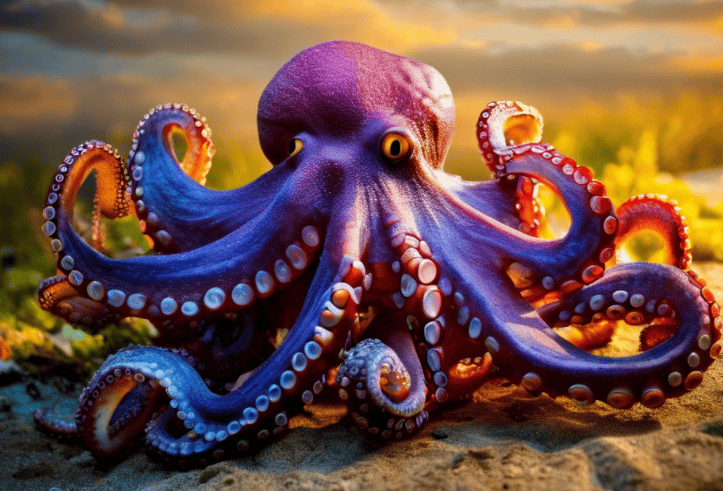In the mysterious deep blue sea, wonderful creatures like octopus swim freely. Not only do they look eye-catching, they also hide an amazing secret: they have three hearts!
A strong body heart and two delicate gill hearts work together to maintain the magical cycle of their lives.
The person who solved this mystery was biologist Curt Onsanker, who conducted the research in his laboratory at Walla Walla University in the United States.

He discovered that the heart in the core of the octopus is strong. Responsible for transporting oxygen-rich blood throughout the body, but not to the gills. The small gill heart is responsible for pumping blood to the gills, ensuring that the octopus can extract life-sustaining oxygen from seawater.
The reason why octopuses have three hearts is similar to how humans rely on four ventricles to overcome low blood pressure, Onsank explained. These three hearts work together to stabilize the blood pressure in the octopus, ensuring smooth blood flow and preventing fainting. What's even more surprising is that when the giant Pacific octopus is resting, its heart will periodically stop beating, and its two gill hearts will take over the task of blood circulation. While swimming, the octopus's heart may even briefly stop beating.

The exact reason for this phenomenon is not completely clear, but It is speculated that this is a mechanism evolved by octopuses to reduce the burden on the heart caused by swimming.
Unlike humans, octopus blood is dark blue because they use copper-based hemocyanin for oxygen transport rather than iron-based hemoglobin.
These unique physiological characteristics make the octopus unique in the world of marine life and become a true miracle of the ocean.

 扫一扫微信交流
扫一扫微信交流
发布评论